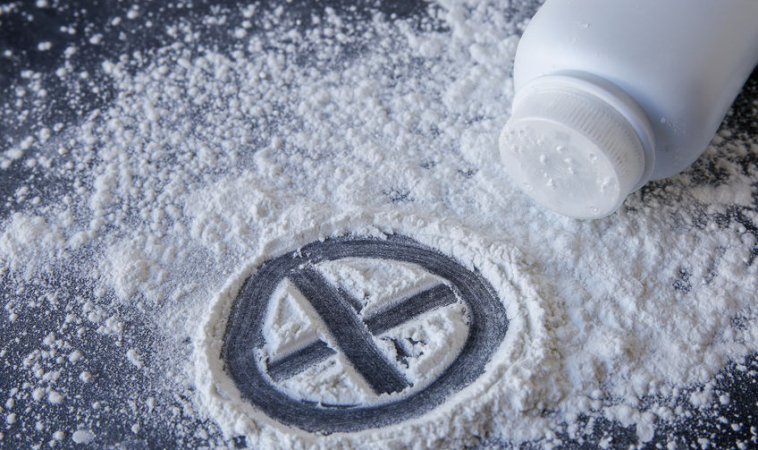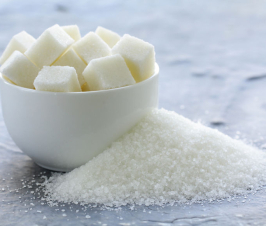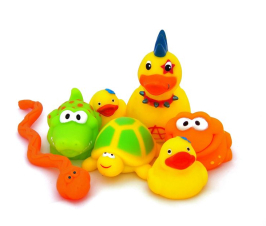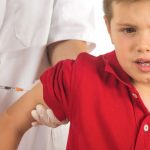The Unclean Truth That is Finally Spreading and Why We Should Know About It (Part 1)
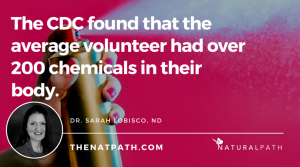 Did you hear about that dirty little secret that’s been going around lately?
Did you hear about that dirty little secret that’s been going around lately?
I’ll give you a hint, it’s scary, toxic, and it’s spreading… in many ways!
Curious? Here it is:
You could be harming your health, and those who you live with, one personal care and household product at a time.
Living in a Toxic Chemical Soup World Has Gotten More “Dense”
If you haven’t guessed yet, it’s time you know about the chemical soup of toxins that are swirling around in our environment!
The truth is, it has many of us in the integrative, scientific, and medical communities concerned about these substances for many reasons.
#1| They are everywhere and more are coming!
According to the U.S. Department of Health and Human Services Toxicology Program, there are over 80,000 chemicals that are registered for use in the United States. Furthermore, approximately 2000 new ones are being introduced every year.1 These ubiquitous substances are found in most of the products we purchase, from the foods we eat, to the water we drink, the air we breathe, and, even in the dust in our homes.1-9
Unfortunately, our bodies are serving as “chemical reservoirs.” In fact, in 2009, the CDC (Center for Disease Control and Prevention) issued their fourth report tracking results on human exposure from nationally representative samples. They found that the average volunteer had over 200 chemicals in their body. More concerning, was that many of them had never been seen in previous studies.2 This demonstrated the alarming rate of release of various new and potentially harmful compounds for our bodies to store.
The Environmental Working Group (EWG), a non-profit, non-partisan organization whose aim is to safeguard human health and the environment, reported the following results from their survey in 2012:
One of every 5 adults are potentially exposed every day to all of the top 7 carcinogenic impurities common to personal care product ingredients …. The average woman uses 12 products containing 168 unique ingredients every day. Men, on the other hand, use 6 products daily with 85 unique ingredients, on average.3
#2| They don’t leave when we want them to
As reported above, these chemicals can accumulate and persist in our bodies and environment. This is true, even if they are banned later, making it hard for removing them without support. 4-6
According to a 2015 article in Endocrine Related Cancers,the fat-loving properties of some in certain compounds make them capable of persevering, even after international attempts to cut our exposure:
Due to their high lipophilic properties, POPs (organo-hydrocarbons with chlorine, fluoride and bromine groups) are most notably resistant to degradation in both humans and the environment, thus proving to be a bigger threat to global health (Yu, et al. 2011). With their half-lives varying from months to decades due to their high lipid solubility that resist biological, photolytic and chemical degradation, POPs are also semi-volatile allowing them to evaporate into the atmosphere and deposit back to the earth in precipitates (Thundiyil, et al. 2007). The Stockholm Convention on POPs was adopted on May 22nd, 2001 and entered into force on May 17th, 2004 with the goal of managing, cleaning and eliminating the production of POPs in the environment. In the US, production and distribution of many POPs have been banned under the Safe Chemicals Act of 2011. However, according to the Environmental Protection Agency and other regulatory sources, chronic POPs exposure continues due to contamination in the food chain, both in artificial and natural environments, and their continued use in under-developed countries with little to no regulation (La Merrill, et al. 2013; Lee et al. 2010; Ljunggren, et al. 2014; Noyes, et al. 2009; Ritter, et al. 2002; Weber, et al. 2008).5
#3| There’s evidence of harm
Evidence is supporting that these chemicals could be a major contributor to our current obesity epidemic, diabetes, reproductive issues, dementia, and a wide array of other chronic diseases.1-9 This has caused many experts and organizations to issue statements of concern on these toxins and their health impacts. There is also an astute attention on little ones, who are more vulnerable due to their size, and, the fact that these compounds can interrupt their biochemical signaling during critical developmental periods.
The Hope Found in the Word Getting Out
The good news is, we can act now and use this knowledge as a means to empowerment, not to scare ourselves to death. (Pardon the pun.)
Thankfully, many of those seeking integrative healthcare have become familiar with this concept of toxic exposure, and, the importance of addressing it. Cleansing has always been a therapeutic philosophy and modality for naturopathic doctors and has recently become more “in vogue.” Some of you may have even partook in constructive measures to limit you and your loved ones’ exposures.
If you want some specific ideas on how to alleviate some of your body burden, you can view the wonderful articles on this topic on this site. I also present some simple solutions in various blogs on my website and in a recent a webinar, which focuses on using essential oils as a tool in prevention.
Now That You’re Safe, It’s Time to “Spread Health”
In the next blog, I’m going to discuss the reasons why this information wasn’t well known. I’ll also briefly discuss what we can do to make a difference and start turning the tide to a less-toxic world.
Image Copyright: <a href=’https://www.123rf.com/profile_thitarees’>thitarees / 123RF Stock Photo</a>
References
- S. Department of Health & Human Services. National Toxicology Program. About NTP. Accessed May 22, 2015. http://ntp.niehs.nih.gov/about/index.htm
- Centers for Disease Control and Prevention: Department of Health and Human Services. Fourth National Report on Human Exposure to Environmental Chemicals: Updated Tables. Atlanta, Ga, USA: Centers for Disease Control and Prevention: Department of Health and Human Services; 2013. http://www.cdc.gov/exposurereport/pdf/FourthReport_UpdatedTables_Mar2013.pdf.
- Environmental Working Group (EWG). Exposures add up- Survey Results. EWG’s Skin Deep Database. http://www.ewg.org/skindeep/2004/06/15/exposures-add-up-survey-results
- La Merrill M, Emond C, Kim MJ, et al. Toxicological Function of Adipose Tissue: Focus on Persistent Organic Pollutants. Environmental Health Perspectives. 2013;121(2):162-169. doi:10.1289/ehp.1205485.
- Genuis SJ, Kelln KL. Toxicant Exposure and Bioaccumulation: A Common and Potentially Reversible Cause of Cognitive Dysfunction and Dementia. Behavioural Neurology. 2015;620143. doi:10.1155/2015/620143.
- Reaves DK, Ginsburg E, Bang JJ, Fleming JM. Persistent organic pollutants & obesity: potential mechanisms for breast cancer promotion? Endocrine-related cancer. 2015;22(2):R69-R86. doi:10.1530/ERC-14-0411.
- Sears ME, Genuis SJ. Environmental Determinants of Chronic Disease and Medical Approaches: Recognition, Avoidance, Supportive Therapy, and Detoxification. Journal of Environmental and Public Health. 2012;2012:356798. doi:10.1155/2012/356798.
- Mitro SD, Dodson RE, Singla V, et al. Consumer Product Chemicals in Indoor Dust: A Quantitative Meta-analysis of U.S. Studies. Environmental Science & Technology. 2016;50(19):10661-10672. doi:10.1021/acs.est.6b02023.
- Allen J, Montalto M, Lovejoy J, Weber W. Detoxification in Naturopathic Medicine: A Survey. Journal of Alternative and Complementary Medicine. 2011;17(12):1175-1180. doi:10.1089/acm.2010.0572.
 Sarah Lobisco, ND, is a graduate of the University of Bridgeport’s College of Naturopathic Medicine (UBCNM). She is licensed in Vermont as a naturopathic doctor and holds a Bachelor of Psychology from State University of New York at Geneseo.
Sarah Lobisco, ND, is a graduate of the University of Bridgeport’s College of Naturopathic Medicine (UBCNM). She is licensed in Vermont as a naturopathic doctor and holds a Bachelor of Psychology from State University of New York at Geneseo.
Dr. LoBisco is a speaker on integrative health, has several publications, and has earned her certification in functional medicine. Dr. LoBisco currently incorporates her training as a naturopathic doctor and functional medicine practitioner through writing, researching, private practice, and through her independent contracting work for companies regarding supplements, nutraceuticals, essential oils, and medical foods.
Dr. LoBisco also enjoys continuing to educate and empower her readers through her blogs and social media. Her recent blog can be found at www.dr-lobisco.com.

